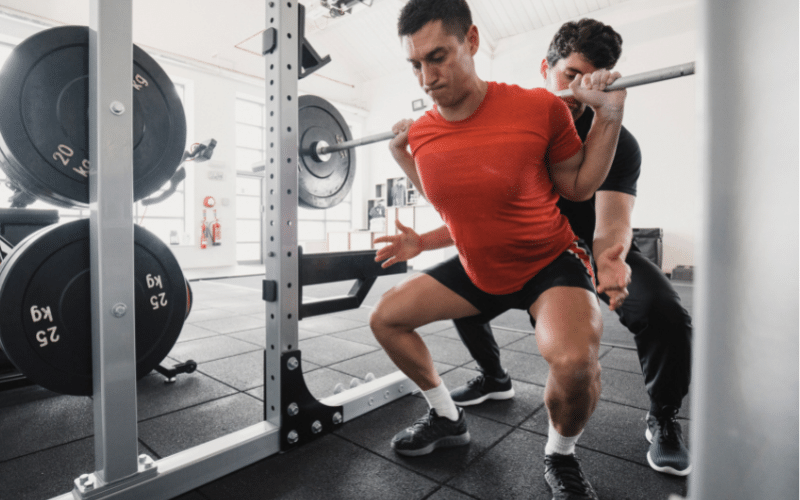Table of Contents

Low bar squats are squats in which the bar is positioned very low on the back around the rear deltoid area, instead of on the top of the shoulders like a typically squat.
The knees are slightly bent, and the feet are positioned about shoulder-width apart.
Is Having the Bar Low on the Back Bad?
It is, if you can’t keep the bar low. Many people think the low bar squat requires to squat low because the bar must be about thigh height on you.
That’s not the case. Just because you can’t reach your toes with the bar on your chest, doesn’t mean you can’t be successful.
In fact, you can squat with a weight that’s too heavy for your body to support.
The idea behind the low bar squat is to get the bar low on your upper back to lift the most weight possible.
What Are Low Squats Good For?
Low bar squats can help strengthen the back, hamstrings, and quads because they create a different stretch and contraction pattern from a conventional leg squat.
You will be performing the same core exercises, such as the deadlift, and single-leg movements in the conventional squat.
In a low bar squat, however, you will be performing a single contraction and pulling the bar up.
What Are the Differences?
High bar squats are popular with bodybuilders and powerlifters, as it increases the depth of the squat. It makes it easier to overload the posterior chain.
The low bar squat is ideal for the majority of the population, as it is easier on the shoulders, back, and glutes. If you have mobility issues, you can do low bar squats.
I highly recommend doing low bar squats at the very beginning of your routine.
This way, you can monitor your form and the muscles working, so that you can perfect your technique as you go along.
How Much Better Are Low Bar Squats?
In contrast to traditional barbell squatting, you can in theory still use dumbbells with a low bar squat, and you can squat high bar, low bar and traditional bar variations.
A low bar squat provides some advantages over both. Most importantly, the low bar squat brings the hip movement into the center of gravity and moves it away from the lumbar spine.
This means you’re using a very different leg drive technique, and this forces you to stay more balanced throughout the lift, so your form is more solid.
The low bar squat also utilizes the entire back, which helps move the bar very close to your midline.
As with all squat variations, the low bar squat provides a good opportunity for frontal deltoid development as an added benefit.
[wp-stealth-ads rows=”2″ mobile-rows=”2″]

